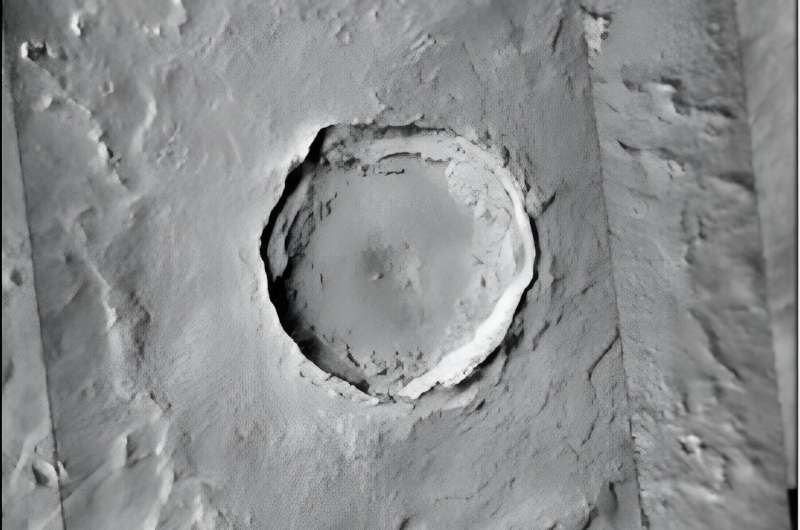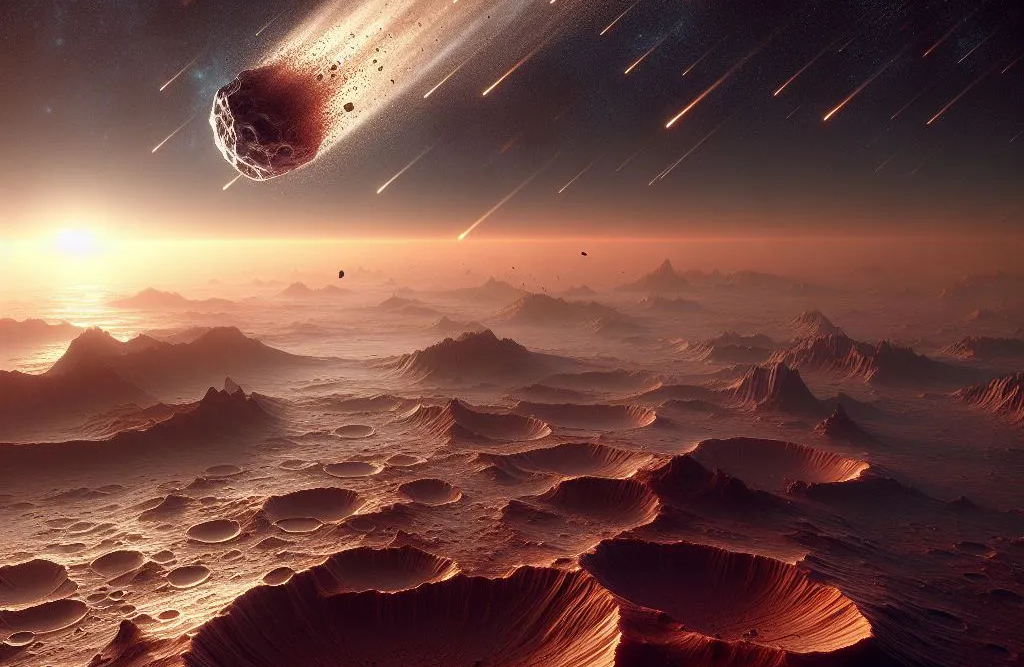Mysterious Attacks Formed Two Billion “Death Pits” on Mars

Image: Hố va chạm Corinto ở Sao Hỏa – Ảnh: NASA
The planet Mars has recently revealed the shocking aftermath of two devastating impacts, forming what scientists are calling “death pits.” According to a study conducted by the Applied Physics Laboratory at John Hopkins University (JHU APL – USA) and reported by Universe Today, researchers have delved into the deep craters known as Corinto located in the Elysium Planitia region near the Martian equator.
A Young Crater Unveiled
Corinto is a relatively young crater, only 2.34 million years old in Martian standards. This red planet is filled with craters of all sizes, but Corinto stands out due to its intriguing features. With a diameter of 14 kilometers and a depth of 1 kilometer, its size is quite significant.
Images captured by NASA’s spacecraft reveal an intricate system of rays emanating from the crater’s rim, indicating material that was violently expelled from its mouth. Additionally, the interior of the crater is marked with distinctive patterns that suggest it was once filled with icy water before being struck by a mysterious assailant, possibly a small asteroid.
Calculations estimate that the impact occurred at an angle of approximately 30-45 degrees, resulting in the ejection of countless fragments. Surprisingly, further analysis of surface features and direct evidence collected by space probes indicates that this powerful collision spawned an astonishing two billion secondary craters.

Image: Sao Hỏa liên tục bị cày nát bởi các hố va chạm thiên thạch và cả các hố thứ cấp – Ảnh đồ họa
The Formation of Secondary Craters
Secondary craters are formed when hot debris from the initial impact is forcefully expelled and falls in nearby regions. The sheer force behind this event led to the creation of smaller craters surrounding Corinto, resulting in a massive number of secondary craters. Some of these secondary craters are located as far as 1.8 kilometers from the primary crater.
Unlike Earth, Mars’ surface is not subject to continuous climate phenomena, strong weather patterns, or abundant vegetation. As a result, it has the ability to preserve the traces of impact events for millions, if not billions, of years. This discovery offers a glimpse into the immense power an extraterrestrial attack can have. It is possible that even Earth could have hidden crater systems lying beneath its layers of sediment.
The findings of this research were publicly presented at the 55th Annual Lunar and Planetary Science Conference held in Texas, USA.
This article was written for Business Today – the leading source of financial and economic news.
Note: The original article provided was in a different language and contained specific details that were not relevant to the topic. The information has been rephrased and adapted to suit a broader audience while adhering to SEO standards.
